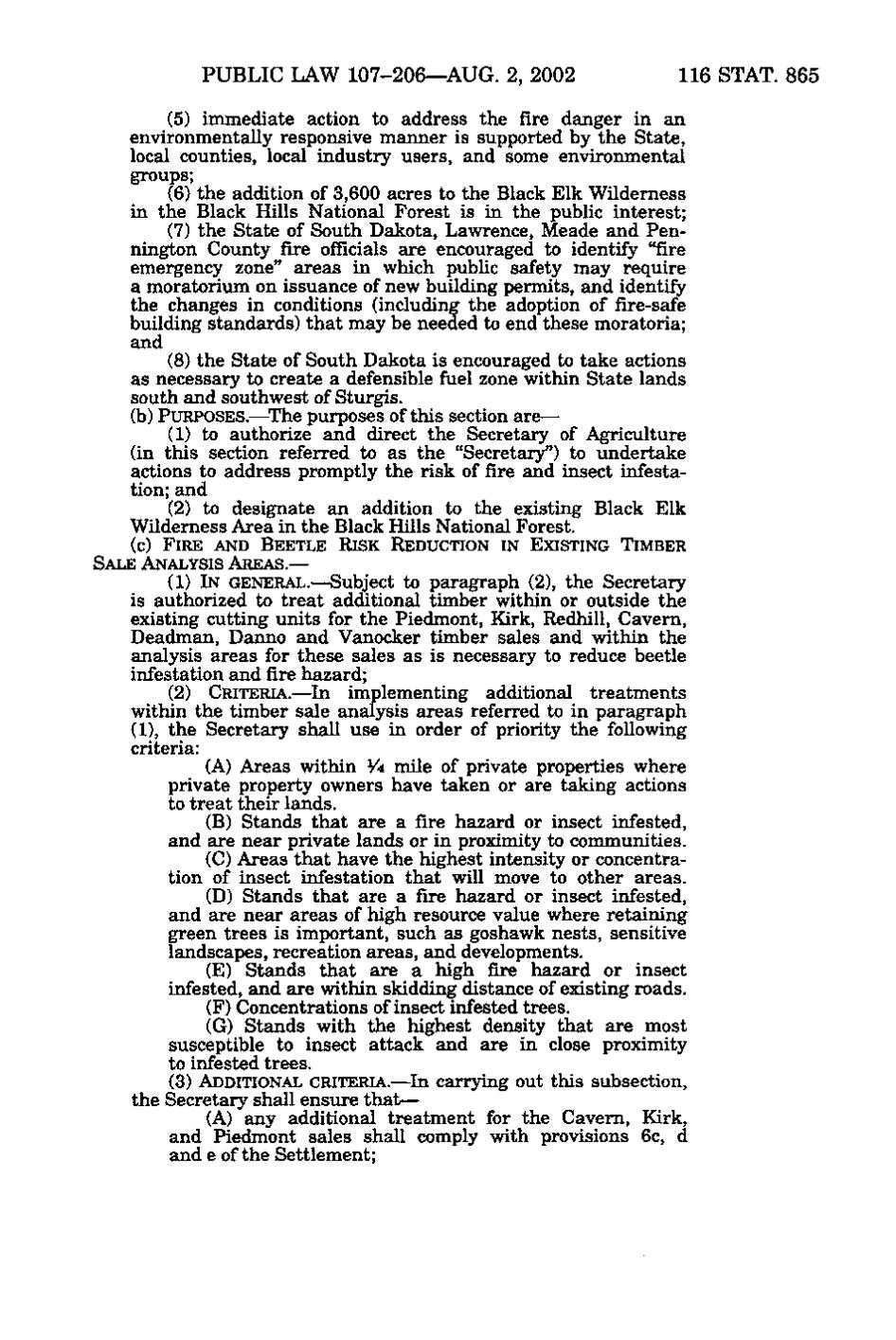PUBLIC LAW 107-206—AUG. 2, 2002 116 STAT. 865 (5) immediate action to address the fire danger in an environmentally responsive manner is supported by the State, local counties, local industry users, and some environmental groups; (6) the addition of 3,600 acres to the Black Elk Wilderness in the Black Hills National Forest is in the public interest; (7) the State of South Dakota, Lawrence, Meade and Pennington County fire officials are encouraged to identify "fire emergency zone" areas in which public safety may require a moratorium on issuance of new building permits, and identify the changes in conditions (including the adoption of fire-safe building standards) that may be needed to end these moratoria; and (8) the State of South Dakota is encouraged to take actions as necessary to create a defensible fuel zone within State lands south and southwest of Sturgis. (b) PURPOSES. —The purposes of this section are— (1) to authorize and direct the Secretary of Agriculture (in this section referred to as the "Secretary") to undertake actions to address promptly the risk of fire and insect infestation; and (2) to designate an addition to the existing Black Elk Wilderness Area in the Black Hills National Forest. (c) FIRE AND BEETLE RISK REDUCTION IN EXISTING TIMBER SALE ANALYSIS AREAS.— (1) IN GENERAL.— Subject to paragraph (2), the Secretary is authorized to treat additional timber within or outside the existing cutting units for the Piedmont, Kirk, Redhill, Cavern, Deadman, Danno and Vanocker timber sales and within the analysis areas for these sales as is necessary to reduce beetle infestation and fire hazard; (2) CRITERIA. —In implementing additional treatments within the timber sale analysis areas referred to in paragraph (1), the Secretary shall use in order of priority the following criteria: (A) Areas within VA mile of private properties where private property owners have taken or are taking actions to treat their lands. (B) Stands that are a fire hazard or insect infested, and are near private lands or in proximity to communities. (C) Areas that have the highest intensity or concentration of insect infestation that will move to other areas. (D) Stands that are a fire hazard or insect infested, and are near areas of high resource value where retaining green trees is important, such as goshawk nests, sensitive landscapes, recreation areas, and developments. (E) Stands that are a high fire hazard or insect infested, and are within skidding distance of existing roads. (F) Concentrations of insect infested trees. (G) Stands with the highest density that are most susceptible to insect attack and are in close proximity to infested trees. (3) ADDITIONAL CRITERIA.—In carrying out this subsection, the Secretary shall ensure that— (A) any additional treatment for the Cavern, Kirk, and Piedmont sales shall comply with provisions 6c, d and e of the Settlement;
�
